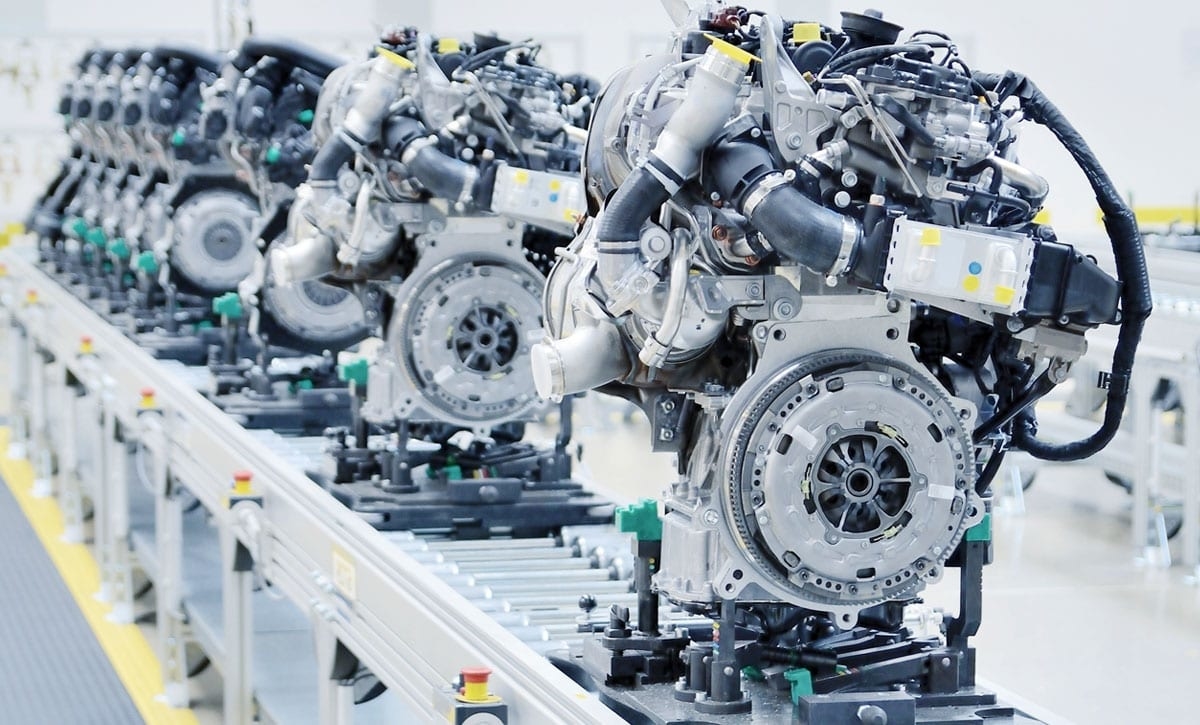Every business is a machine. A collection of constituent parts, each arm of the business performs a function that the others rely on. The effect of one department may clearly interact with another, for example product designers and the assembly line, but the interactions go deeper. Every operational action touches on the whole business, a total effect that may have a small impact, but an impact nonetheless. Tracking the accumulation of these effects can lead to powerful change; a culture of 1% improvement that rapidly adds up.
The most obvious example is time management. To remain profitable, projects rely on good time management across the business. This means gaining a full understanding of how long each process requires just to fulfill one order. How long does it take to survey the market and gain an insight on what to manufacture? How long does it take to design, to create, to perform testing? Next day or next week delivery? Will clients be on hold for three minutes or thirty minutes if they call the customer service team?
In this example, the time it takes to perform a function informs the next; a multitude of projects that are interconnected and, therefore, inter-reliant. Because of situations like these, we’ve seen the rise of systems thinking in the manufacturing industry, studying the impact of each interaction through the company. But to study the impact, we first need to think of the data that is collected, and about the innovations that are accelerating systems thinking: better connectivity and data tracking.
Connectivity & data tracking
Through advancements in online network connectivity, most recently the rolling out of 5G connected devices and the ongoing strengthening of bluetooth, it is easier than ever to connect the various devices that enable key business functions. This is a change we’re used to in daily life. When going for a run, the heartbeat monitor on a smartwatch can connect via bluetooth to your smartphone, which uses GPS data to create a portrait of the run — distance covered, average speed, your heart rate at each interval, expected calorie burn — giving far more information than simply checking the time when you started the run and when it ended.
At a business level, we can see a similar effect throughout different departments. There are two ways that this is realised: data analysis and automation. This interconnected data is often collected through cloud software, such as a CRM system, pooling data in one easily accessible place. This allows analysis across multiple data sources. Just as a fitness app collects the heart rate, distance and time data, a business can use cloud applications to collect information on the most searched for website FAQs, the fulfillment and returns record, and materials sourcing data. This can track when customers started experiencing a particular issue with a product, whether the issue can be solved through support or requires a recall, and whether it corresponds to a particular order from a supplier. Together, both the issue and solution can be deduced.
In this example, data is automatically collected but manually analysed. The data team begins with a hypothesis and looks to prove or disprove their initial thinking. Not every business has the capacity to enlist a team of analysts. This is a detail that cloud software providers are aware of, with many building automated insight gathering into their data offering.
Automated analysis & action
These AI powered tools can be highly useful when approaching a systems thinking transformation, as the automated software can reveal unexpected relationships between data points (the 1% improvements mentioned earlier), in a fraction of the time it takes a human team to create a data model and pull together a deep dive on linked data.
The gathered insights could, for example, reveal an unexpected relationship between the size of a client’s order and whether it includes a particular product, implying that the product in question could be promoted more readily in client comms to gain larger future orders. These valuable efficiencies are the links that typically go unnoticed when departments look to improve their own operations, as they break down data silos and span the breadth of the business.
Automation also relates to the application of insights. Connected devices that act on the information passed between each piece of the digital ecosystem. When a preset condition is met, an action is taken. These functions can be useful in alleviating the strain of administrative tasks on your workforce. The everyday tasks that take a surprising amount of time out of the day. In addition to freeing up timesheets, automating processes also removes human error from the equation, reacting as soon as any circumstances change.
All together, making use of the business’s Internet of Things ecosystem results in autonomy, interactivity and better informed decision making. Many businesses will already own connected devices, the challenge is to ensure that connections are made and their use is maximised.
Creating a soft AI build
Moving forward, businesses should be looking for similar opportunities to create a soft AI build into their upcoming projects. The industry is moving more and more toward AI powered operations; running smaller proof cases allows your business to start evolving its AI capability. These proof points will make all the difference when AI use is an industry standard, applied by all market leaders and missed by those that fall behind.
The focus of a soft AI build is accessibility. How can AI be applied to existing processes, without disrupting the profitability of key business functions? Start small and aim to scale. With the ball rolling, even smaller businesses can start to think about further applications of AI and IoT connected devices to improve their offering.
Applications of AI using connected devices can be wide ranging. Begin by looking at what IoT devices your business already owns. The most efficient digital projects make more of existing infrastructure. Plot how their collected data informs different decisions across the business. Quickly, a list will grow as the vast majority of businesses have plenty of these types of interlinked systems, though are yet to fully connect them.
Working with a tech partner can support your business in this endeavour, should you want a comprehensive audit of current and potential capabilities. It is important to look for a partner that is tech-agnostic, a company that will analyse all the possible software solutions with an open mind, recommending the best fit for your business, rather than the offering that they receive extra commission on.
For the first project, look to implement the insights gathered by connected devices. This will allow your business to test the AI system’s ability to parse and compare data. As data is the fuel of all subsequent projects, and fundamental to the business at large, ensuring effective data collection and use is a must.
As you plan the project, consider how it can scale and adapt. Can the same principles and setups be applied to another function inside the business, if it proves successful? Similarly, can the solution be repeated at a larger level, without incurring excessive cost? Answering these questions now will ensure that the project has the scope to build up in the future, again maximising the return from single implementations.
A no-ops future
The ultimate goal as the transformation develops, is to plan for a NoOps future, running as many functions through AI powered systems as possible. This results in lower running costs, cuts human error from the equation, and maximises efficiency through instant, data-driven decision making, freeing up time for staff to work on tasks that only a human can perform. The most futuristic innovations seem a little closer than before.
More Insights?
View all InsightsQuestions?
Global SVP Technology & Engineering





